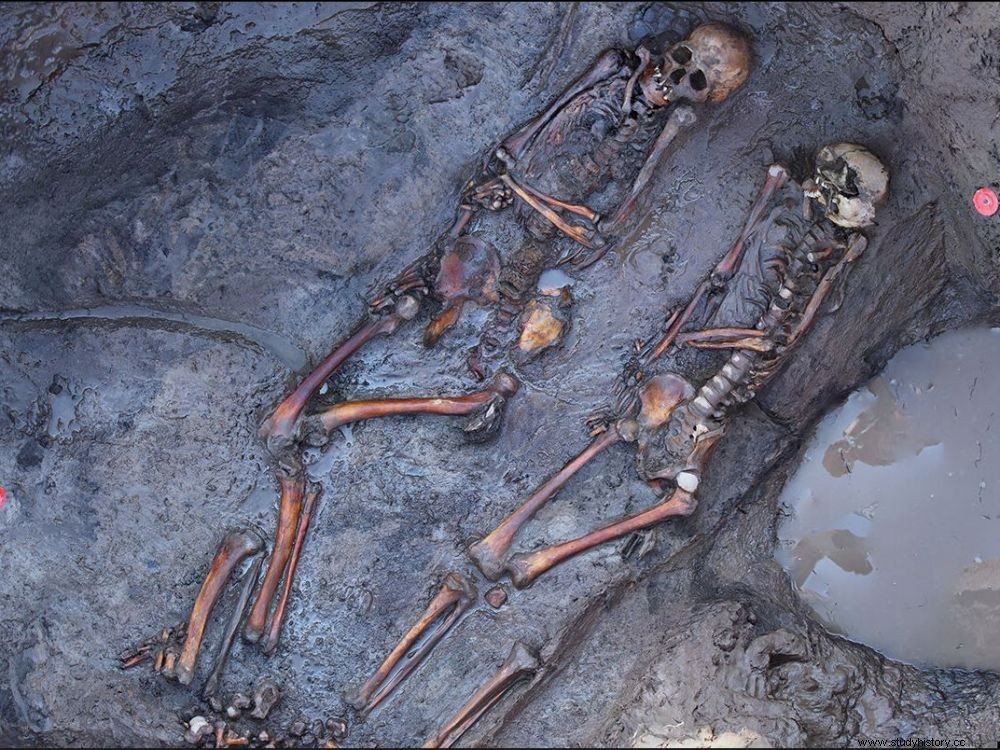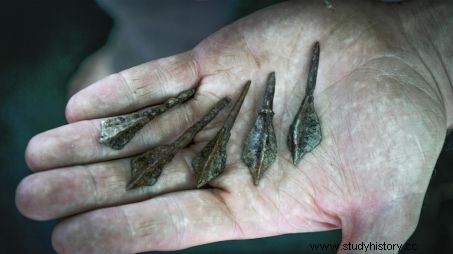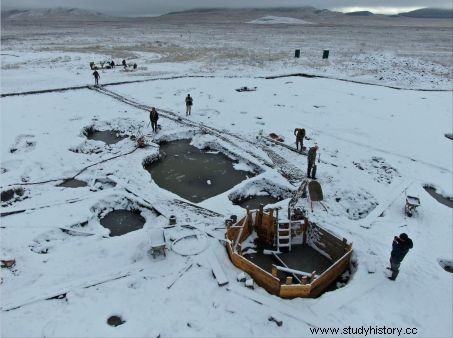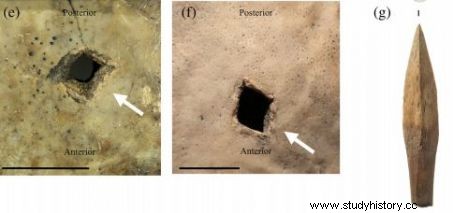Study of a 2 e cemetery -4 e centuries, discovered in the Republic of Tuva, in southern Siberia, reveals the violent behavior of ancient populations of nomadic pastoralists.

Skeletons of steppe nomads bearing traces of violence at the Tunnug 1 site in southern Siberia.
Decapitated, the skull substituted by a sheep's vertebra, a former inhabitant of the steppes lay at the bottom of a dark tomb... Other deceased were found with their limbs pierced by sharp sword blows, or even arrowheads tapered... These lesions, striking vestiges of past violence, were identified by an international team of archaeologists led by researchers from the University of Bern (Switzerland) and the Russian Academy of Sciences, on the skeletons of nomadic populations of Siberia, in a necropolis dating from the 2 th on the 4 th century of our era. This one, recently unearthed around the site of Tunnug 1, adjoins a kurgan from the Uyuk Valley, one of the oldest Scythian "royal" tombs identified in 2017.

Five iron arrowheads from Tomb 33 in Tunnug 1 Cemetery. ©Trevor Wallace / Tunnug 1 Research Project
In a study published in the American Journal of Physical Anthropology , the authors of these macabre discoveries return to the excavations carried out on the outskirts of the mound of Tunnug1 and the vast cemetery of Kokel in which the remains of 87 individuals were unearthed. "We were very surprised by the state of the graves", explains Gino Caspari, archaeologist at the University of Bernes (Switzerland), one of the main signatories of the article. "However, after examining the trauma observed on these human remains, we believe that these exceptional manifestations of violence are not exclusively related to the war, even if it played an important role in the life of the nomads of the Eurasian steppes. Go perhaps also mix little-known rituals, such as collecting trophies", estimates the specialist contacted by Sciences et Avenir.

Partial view of Tunnug 1 cemetery in the Siberian steppe. Archaeologists worked there in water, ice and snow until the fall of 2019. ©T. Wallace / Tunnug 1 Research Project
Recently, from another area of southern Siberia, radiographic analyzes of 2000-year-old clay heads belonging to the Tagar culture (6 e BC- 2 e AD) on the Yenisei, revealed to dumbfounded anthropologists the presence of rams' skulls inside modeled human heads! Even if these companies do not have direct links with those of Tunnug 1, these actions reflect enigmatic practices and many strange mores in the immense Siberia.
The historians of antiquity – whether Chinese or Greco-Roman, in particular the famous Herodotus (5 e century BC)– described the steppe nomads as violent people. Barbarian warriors who were a constant threat to the safety of other groups.
Wars and rituals
The study thus demonstrates that 25% of individuals from the Tunnug 1 necropolis died as a result of acts of interpersonal violence, mainly linked to hand-to-hand combat, but also beheadings, or even scalpings (the scalp snatch). Although the violence primarily affected men, women and children were also among the victims.

Traces of bone perforation by arrowhead. ©T. Wallace / Tunnug 1 Research Project
On the other hand, if the Republic of Tuva, the Sayan and Altai range of southern Siberia, has rich archaeological descriptions of its human occupation from the Paleolithic to the early Iron Age, and therefore the Scythian universe, it is not the same for the later periods, those extending from the 2 e century to 4 th century CE, to which the cemetery of Tunnug 1 belongs. /em> , says Gino Caspari.
"We know very little about these time periods, and this observed violence seems to occur with some regularity. To understand how long it lasts, many studies still need to be done." , continues the archaeologist. "What we mostly see through this sample is probably the decline of political stability in the region following the decline of the Xiongnu Empire, this confederation of nomadic tribes from present-day Mongolia and who evolved in the steppes between Lake Baikal and North China" , adds Gino Caspari. Genetic analyzes are underway to learn more about the identity of these cultures. To be continued.
